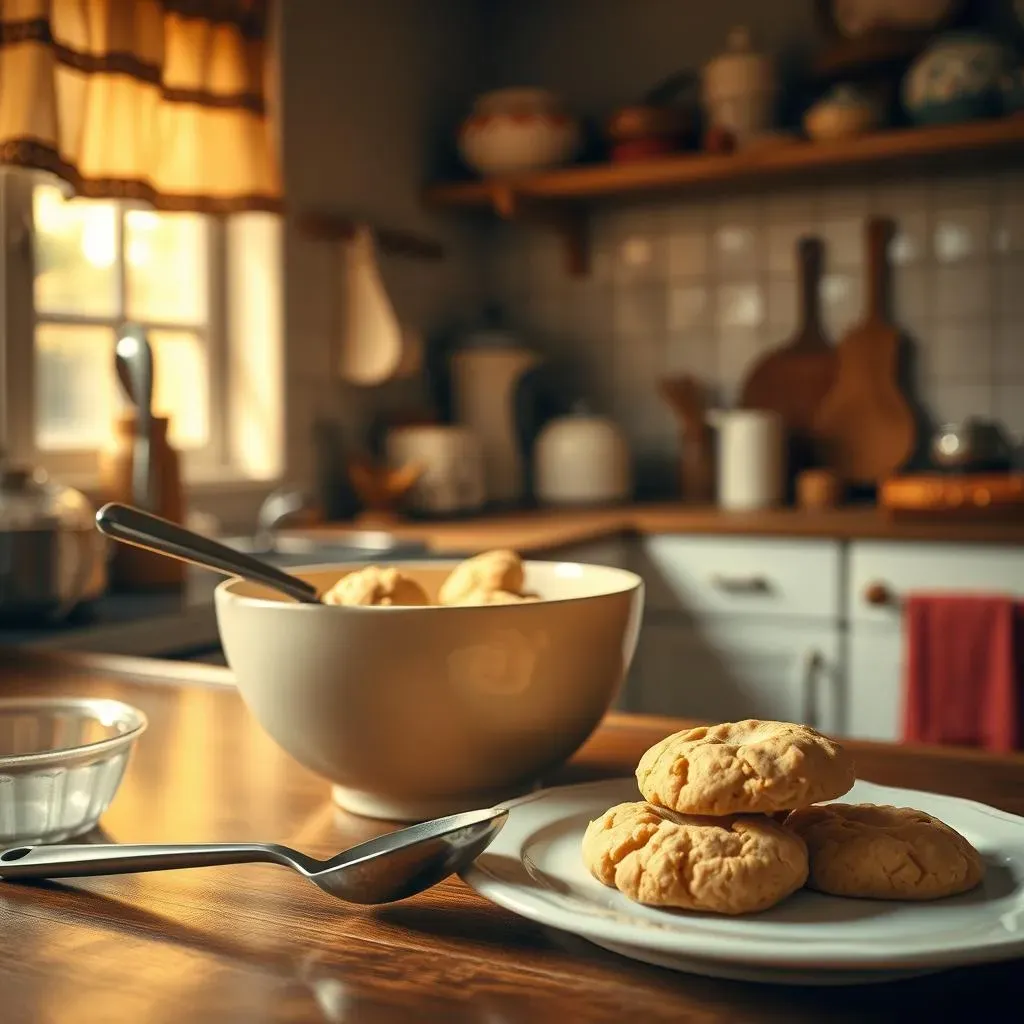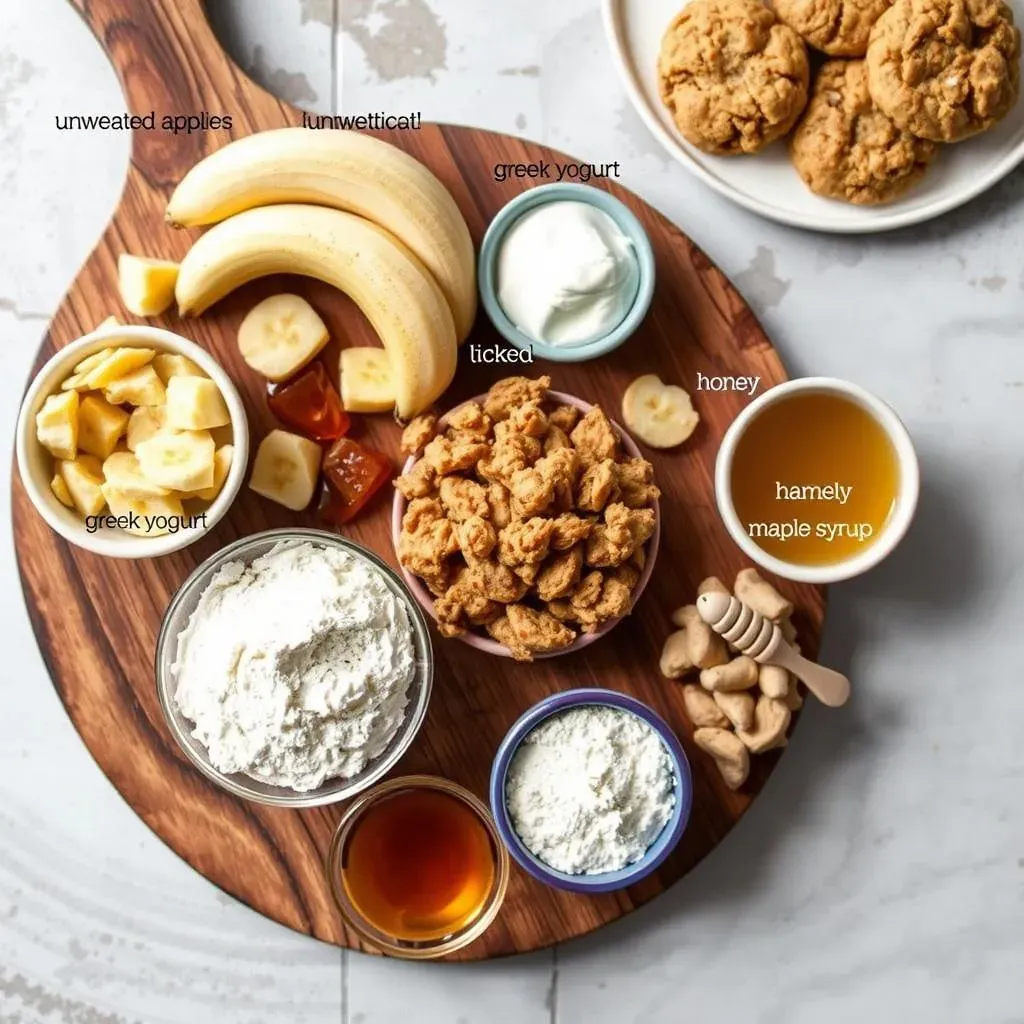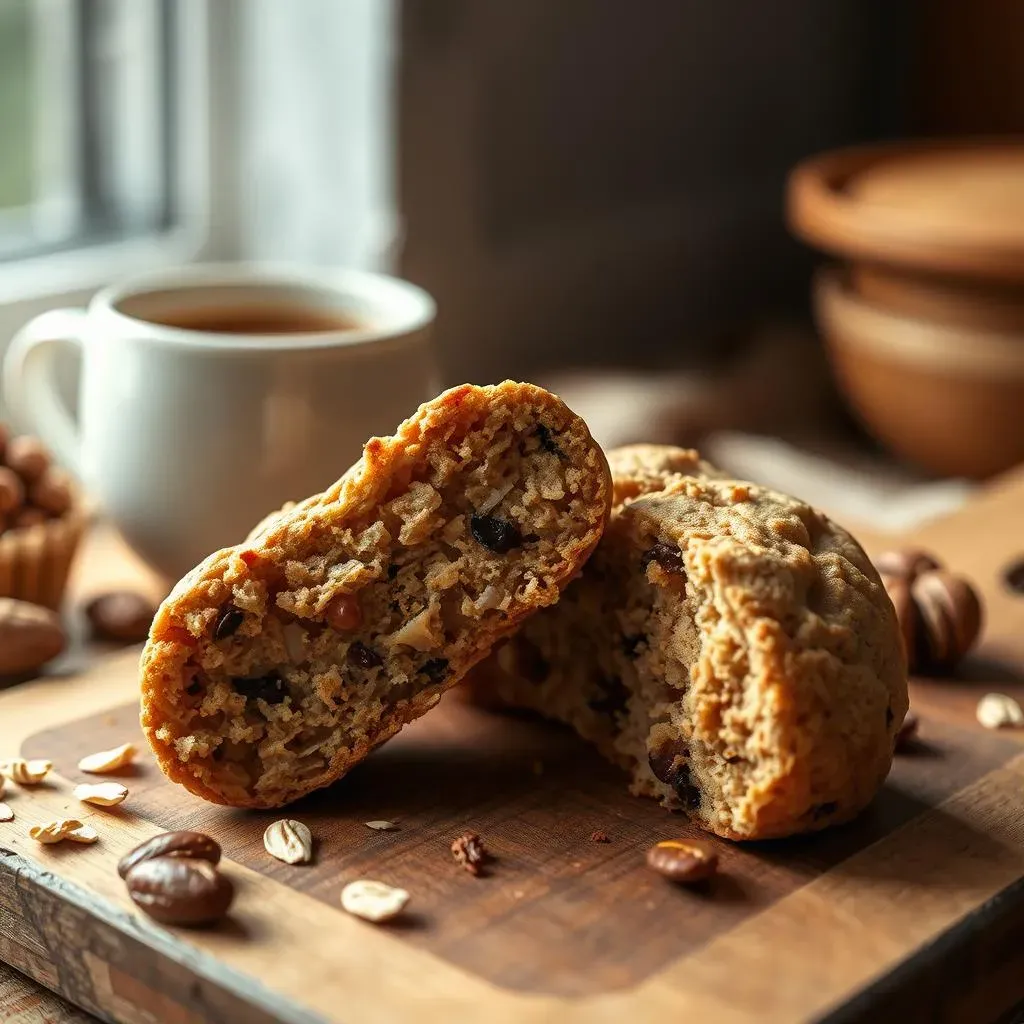Table of Contents
Ever found yourself dreaming of warm, gooey cookies but then the thought of all that fat makes you hesitate? I get it. We all want to enjoy a sweet treat without feeling like we're derailing our healthy habits. That's where the magic of a good low fat cookies recipe comes in. It's not about deprivation, it's about smart swaps and clever techniques that let you have your cookie and eat it too! This article isn't just another list of recipes; it's your guide to understanding the art of low-fat baking. We'll break down the essential ingredients, explore a super easy recipe you can whip up anytime, and give you the inside scoop on how to make sure your low-fat cookies are perfect every single time. Get ready to bake some guilt-free goodness because we're about to prove that low-fat doesn't have to mean low-flavor!
Understanding Low Fat Baking

Understanding Low Fat Baking
What Does "Low Fat" Really Mean?
Okay, let's break it down. When we talk about low-fat baking, we're not trying to create sad, flavorless cardboard. Instead, we're focusing on reducing the amount of fats, like butter and oil, that are typically used in cookie recipes. This doesn't mean cutting out all fats, because honestly, a little bit can go a long way in taste and texture. It's more about making smarter choices. Think of it like this: we're swapping out some of the heavy hitters for lighter options, without sacrificing the deliciousness. It's a balancing act, and once you get the hang of it, it's pretty cool.
So, why bother with low-fat cookies anyway? Well, for starters, it can be a great option if you're trying to be a bit more mindful of your diet. Maybe you're watching your cholesterol or just want a lighter treat. But it's also about opening up a whole new world of baking possibilities. When you're not relying as much on fat for flavor and texture, you start experimenting with other ingredients and techniques. It's about learning to get creative and discovering that you can still have amazing cookies that are a bit better for you. It's a win-win, right?
The Science Behind the Swap
Now, let's get a little nerdy for a second. The reason fat is so important in baking is that it contributes to the texture, moisture, and overall richness of baked goods. It's what makes cookies chewy, tender, and melt-in-your-mouth good. So when we reduce fat, we need to find ways to replace those qualities. This is where things like applesauce, mashed bananas, and even yogurt come into play. These ingredients add moisture and can help create a soft, satisfying cookie. It's like they're stepping in as understudies for the fat, keeping the show running smoothly.
But it's not just about throwing in a bunch of substitutes and hoping for the best. It's about understanding how these ingredients work together. For example, using too much applesauce can make your cookies a bit cakey, while not using enough can make them dry and crumbly. It's a bit of a science experiment, and sometimes, you might have a few flops before you get it right. But hey, that's all part of the fun, and every mistake is a lesson learned. Don't be afraid to tweak things and find what works best for your taste and your kitchen.
Ingredient | Why It's Important | Low-Fat Substitute |
|---|---|---|
Butter/Oil | Adds richness, moisture, and tenderness | Applesauce, mashed banana, yogurt |
Sugar | Adds sweetness and helps with browning | Natural sweeteners in moderation |
Eggs | Adds structure and richness | Egg whites, flax eggs |
Essential Ingredients for Low Fat Cookies Recipe

Essential Ingredients for Low Fat Cookies Recipe
The Low-Down on Low-Fat Cookie Must-Haves
Alright, so we've talked about why we're ditching some of the usual suspects in baking, but what are we using instead? This is where the fun begins! First up, let's talk about our liquid heroes: unsweetened applesauce, mashed ripe bananas, and even plain Greek yogurt are fantastic for adding moisture and a bit of sweetness. They're like the secret agents of low-fat baking, doing the work of fat without all the baggage. But remember, each one has its own personality. Applesauce gives a slightly tangy note, bananas bring a natural sweetness, and yogurt adds a bit of a creamy texture. It's all about choosing the right one for your cookie mission.
Next, we need to consider our flour power. Whole wheat flour is a great option for adding fiber and a slightly nutty taste, but it can be a bit dense. So, you might want to mix it with all-purpose flour or even try oat flour for a lighter touch. And don't forget about our sweet friends! Instead of relying solely on refined sugar, think about using natural sweeteners like honey, maple syrup, or even a bit of stevia. These add sweetness and a depth of flavor. But a word of caution: natural sweeteners can sometimes behave differently than regular sugar, so you might need to experiment a little to get the balance just right. It's like learning a new language, but once you get the hang of it, you'll be fluent in low-fat cookie speak! And of course, we can't forget about the flavor boosters: vanilla extract, cinnamon, a pinch of salt, and those chocolate chips if you're feeling wild. These are the supporting cast that make our cookies truly amazing.
Ingredient | Why We Love It | Tips for Using |
|---|---|---|
Applesauce | Adds moisture, slight tang | Use unsweetened, start with small amounts |
Mashed Banana | Adds sweetness and moisture | Use ripe bananas for best flavor |
Greek Yogurt | Adds moisture and creaminess | Use plain, nonfat for best results |
Whole Wheat Flour | Adds fiber and nutty flavor | Mix with all-purpose for lighter texture |
Easy Low Fat Cookies Recipe to Try at Home

Easy Low Fat Cookies Recipe to Try at Home
Let's Get Baking: A Simple Low-Fat Cookie Recipe
Okay, enough talk, let's get to the fun part: baking! I've got a super easy low fat cookies recipe that's perfect for beginners and those who want a quick treat. This recipe uses simple ingredients that you probably already have in your pantry. We're going for a soft, chewy cookie that's not overly sweet, so you can enjoy it without any guilt. Think of this as your go-to recipe when you need a cookie fix but don't want to go overboard. The best part? It's totally customizable, so you can add in your favorite flavors and mix-ins. It's like your own little cookie laboratory, and the experiments are always delicious.
So, here’s the deal: we're gonna mix together some flour, a touch of baking soda and baking powder, and a pinch of salt. Then, in another bowl, we'll mash a ripe banana, add a bit of honey or maple syrup, and some vanilla extract. We'll gently combine the wet and dry ingredients, throw in some chocolate chips (because, why not?), and bake until golden brown. It's that simple! No fancy equipment or complicated steps are required. It's all about keeping it easy and fun. And trust me, the aroma of freshly baked cookies wafting through your kitchen is totally worth it. You'll be the hero of your household, or at least you'll have some pretty tasty cookies to enjoy.
Ingredient | Amount |
|---|---|
All-purpose flour | 1 1/2 cups |
Baking soda | 1/2 teaspoon |
Baking powder | 1/4 teaspoon |
Salt | 1/4 teaspoon |
Ripe banana, mashed | 1 medium |
Honey or Maple Syrup | 1/4 cup |
Vanilla Extract | 1 teaspoon |
Chocolate Chips | 1/2 cup |
Step-by-Step Instructions
First, preheat your oven to 350°F (175°C). While that's heating up, grab a large bowl and whisk together the flour, baking soda, baking powder, and salt. Set that aside for a bit. In a separate bowl, mash your ripe banana until it's nice and smooth. Then, stir in the honey or maple syrup and vanilla extract. Now, pour the wet ingredients into the dry ingredients and mix until just combined. Don't overmix it; a few lumps are okay. Finally, fold in the chocolate chips, making sure they're evenly distributed. Now, scoop spoonfuls of the dough onto a baking sheet lined with parchment paper. Bake for 10-12 minutes, or until the edges are golden brown and the centers are set. Let them cool on the baking sheet for a few minutes before transferring them to a wire rack to cool completely. And that's it! You've just made delicious, low-fat cookies. Pat yourself on the back and enjoy the fruits (or cookies) of your labor.
Tips for Perfect Low Fat Cookies Every Time

Tips for Perfect Low Fat Cookies Every Time
Mastering the Art of Low-Fat Baking
Okay, so you've got your recipe, you've gathered your ingredients, and you're ready to bake. But before you dive in headfirst, let's talk about some key tips that can make or break your low-fat cookie adventure. First things first, don't overmix your dough. Overmixing can develop the gluten in the flour, resulting in tough, chewy cookies instead of soft, tender ones. Mix just until the ingredients are combined, and then step away from the bowl! It’s like you’re trying to be a gentle baker, not a vigorous dough-kneader. Remember, less is more when it comes to mixing. And speaking of dough, chilling it is your secret weapon. Pop that dough into the fridge for at least 30 minutes. This will help the flavors meld together and make the cookies less likely to spread too much in the oven. It’s like giving your cookies a little spa day before the big bake.
Another crucial tip is to watch your oven temperature. Low-fat cookies can be a bit more sensitive to heat, so making sure your oven is at the right temperature is super important. An oven thermometer is your best friend here, because sometimes ovens lie. And don't overbake them! Low-fat cookies can dry out quickly, so keep a close eye on them and take them out of the oven as soon as the edges are golden brown and the centers are set. They'll continue to bake a bit as they cool, so don't worry if they seem a little soft when you take them out. It's like that magic moment when you know the cookies are just right, and it's all about trusting your instincts.
Tip | Why It Matters |
|---|---|
Don't Overmix | Prevents tough cookies |
Chill the Dough | Helps flavors meld and prevents spreading |
Watch Oven Temp | Avoids overbaking and drying out |
Ingredient Swaps and Smart Substitutions
Now, let's chat about ingredient swaps. If you find that your cookies are coming out a bit dry, try adding a tablespoon or two of extra applesauce or yogurt. This can boost moisture without adding extra fat. And if you're looking to add a bit of extra chewiness, try using a combination of all-purpose and whole wheat flour. It's all about playing around and finding what works best for your taste and your kitchen. Don't be afraid to experiment with different types of sweeteners too. Maple syrup, honey, and even a bit of stevia can add a whole new dimension of flavor to your cookies. Just remember that some sweeteners are sweeter than others, so you might need to adjust the amount accordingly. It's like being a mad scientist in the kitchen, but instead of creating monsters, you're creating delicious cookies.
And let's not forget about the mix-ins! Chocolate chips are a classic, but don't be afraid to get creative. Try adding nuts, dried fruit, or even a sprinkle of sea salt for a bit of extra flair. The possibilities are endless! And remember, when it comes to low-fat baking, it's all about balancing flavors and textures. It's like you're creating a symphony of deliciousness, and every ingredient plays a vital role. So, have fun, be creative, and don't be afraid to try new things. You might just discover your new favorite cookie recipe. And most importantly, remember that baking is supposed to be fun! So, relax, enjoy the process, and don't stress too much if things don't always go perfectly according to plan. It's like a delicious adventure, and every cookie is a little victory.
Troubleshooting Your Low-Fat Cookies
Okay, let's face it, sometimes things go wrong in the kitchen. Maybe your cookies are spreading too thin, or they're coming out a bit dry. Don't worry, it happens to the best of us! If your cookies are spreading too much, it could be that your dough is too warm. Try chilling it for a bit longer before baking. And if that doesn't work, you could also try adding a tablespoon or two of extra flour to the dough. It’s like they are having a hard time keeping their shape, and a little bit more flour can help them stand tall. If your cookies are coming out dry, it could be that you're overbaking them or that you need a bit more moisture in your dough. Try adding an extra tablespoon of applesauce or yogurt. It's like they are thirsty for a bit more moisture, and a little bit of liquid can do the trick.
And if you're having trouble with the texture, don't be afraid to experiment with different types of flour. Whole wheat flour can sometimes be a bit dense, so try mixing it with all-purpose flour for a lighter touch. And if you're having issues with the sweetness level, you can always adjust the amount of sweetener to your liking. It's like you're the conductor of your own cookie orchestra, and you can tweak and adjust things until they sound just right. Remember, baking is a journey, not a destination. There's always something new to learn, and every mistake is a chance to improve. So, keep experimenting, keep learning, and keep baking! And most importantly, don't be afraid to ask for help if you're stuck. There are tons of online resources and communities of bakers who are happy to share their tips and tricks. It’s like we are all in this together, and we can learn and grow as bakers together.
